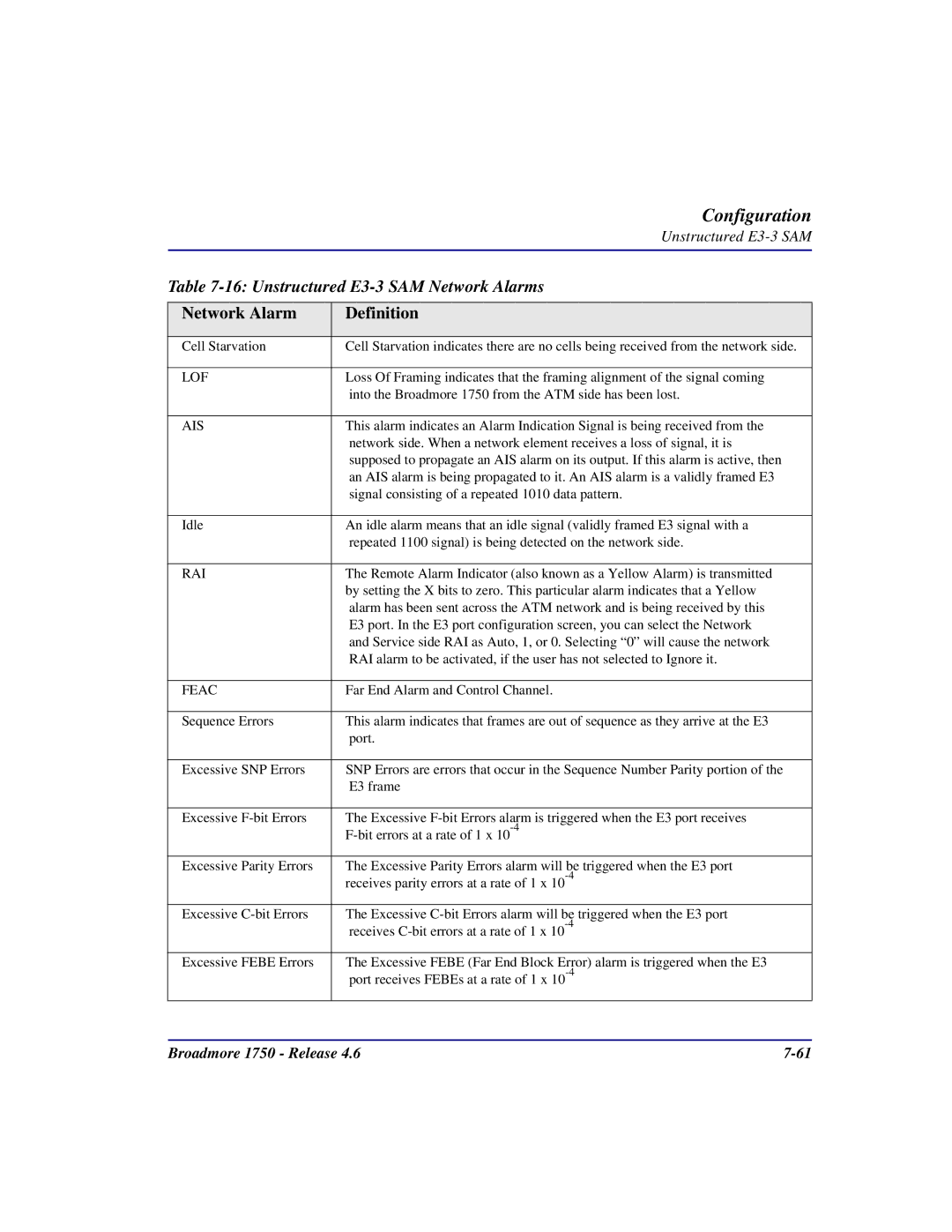| Configuration |
| Unstructured |
|
|
Table | |
|
|
Network Alarm | Definition |
|
|
Cell Starvation | Cell Starvation indicates there are no cells being received from the network side. |
|
|
LOF | Loss Of Framing indicates that the framing alignment of the signal coming |
| into the Broadmore 1750 from the ATM side has been lost. |
|
|
AIS | This alarm indicates an Alarm Indication Signal is being received from the |
| network side. When a network element receives a loss of signal, it is |
| supposed to propagate an AIS alarm on its output. If this alarm is active, then |
| an AIS alarm is being propagated to it. An AIS alarm is a validly framed E3 |
| signal consisting of a repeated 1010 data pattern. |
|
|
Idle | An idle alarm means that an idle signal (validly framed E3 signal with a |
| repeated 1100 signal) is being detected on the network side. |
|
|
RAI | The Remote Alarm Indicator (also known as a Yellow Alarm) is transmitted |
| by setting the X bits to zero. This particular alarm indicates that a Yellow |
| alarm has been sent across the ATM network and is being received by this |
| E3 port. In the E3 port configuration screen, you can select the Network |
| and Service side RAI as Auto, 1, or 0. Selecting “0” will cause the network |
| RAI alarm to be activated, if the user has not selected to Ignore it. |
|
|
FEAC | Far End Alarm and Control Channel. |
|
|
Sequence Errors | This alarm indicates that frames are out of sequence as they arrive at the E3 |
| port. |
|
|
Excessive SNP Errors | SNP Errors are errors that occur in the Sequence Number Parity portion of the |
| E3 frame |
|
|
Excessive | The Excessive |
| |
|
|
Excessive Parity Errors | The Excessive Parity Errors alarm will be triggered when the E3 port |
| receives parity errors at a rate of 1 x |
|
|
Excessive | The Excessive |
| receives |
|
|
Excessive FEBE Errors | The Excessive FEBE (Far End Block Error) alarm is triggered when the E3 |
| port receives FEBEs at a rate of 1 x |
|
|
Broadmore 1750 - Release 4.6 |
